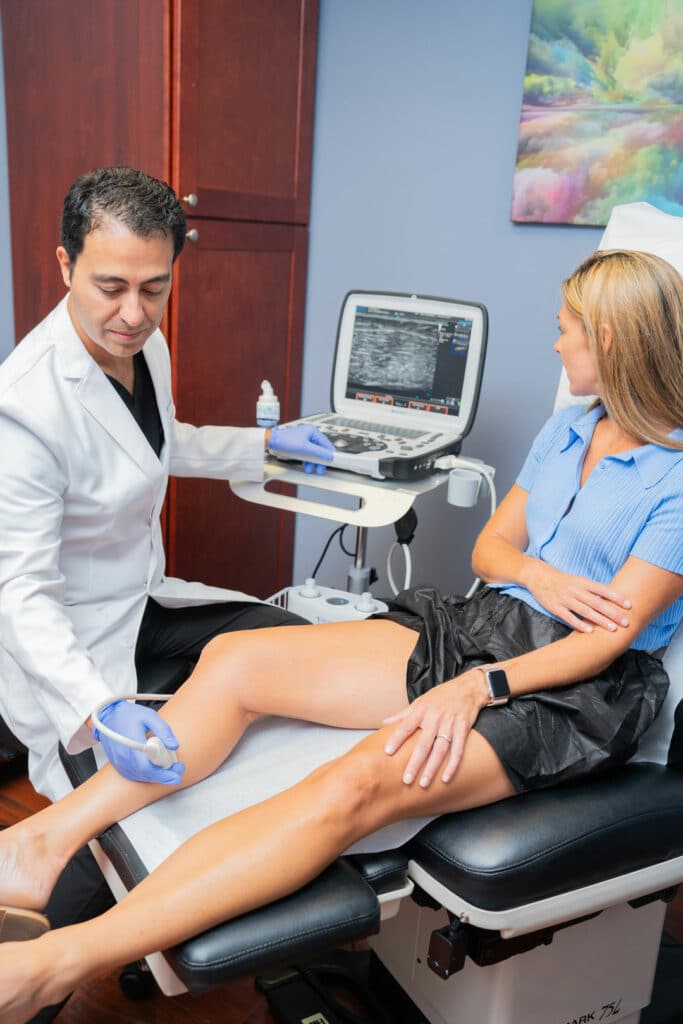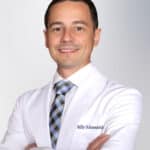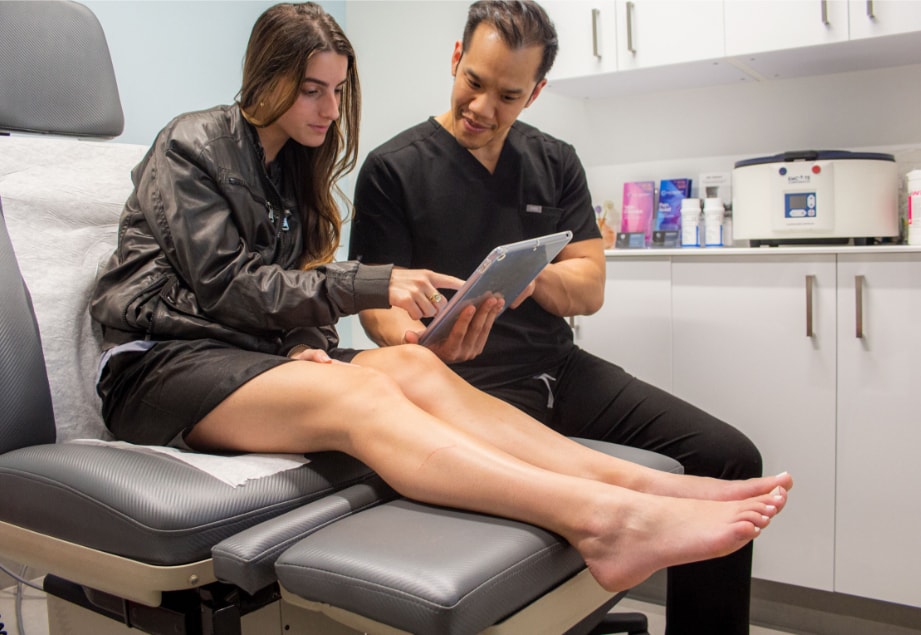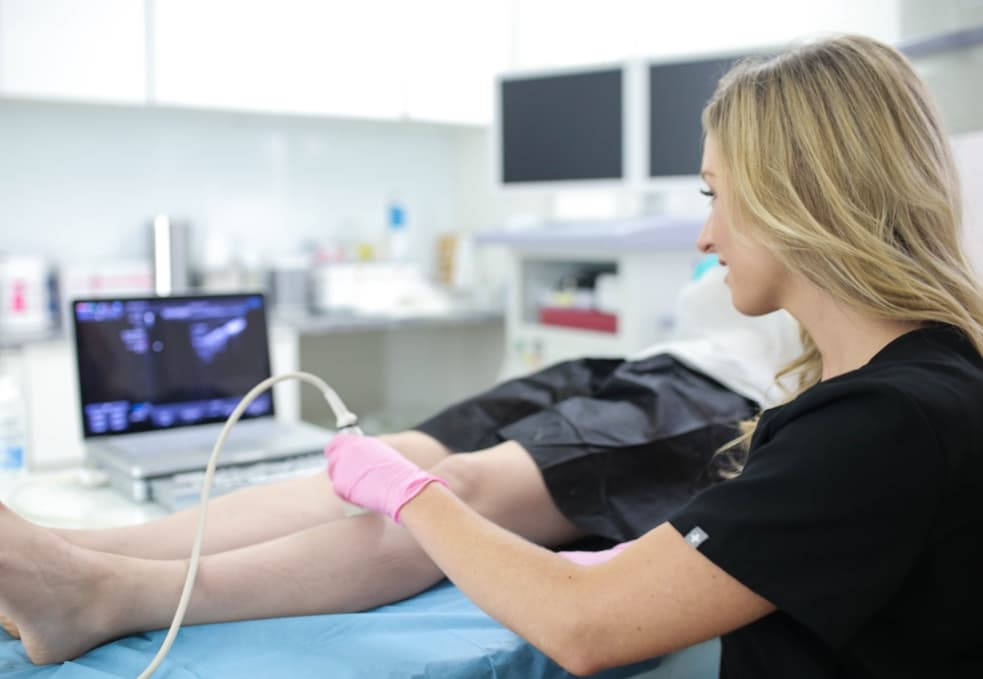What is a varicose vein specialist called?
A varicose vein is an enlarged and twisted vein most commonly found in the legs. They can also be found in other parts of the body, including the abdomen and thighs. While they are not always harmful, they can be painful and cause other symptoms, such as itching, burning, and swelling. Furthermore, they are often symptomatic of a dangerous underlying medical condition known as chronic venous insufficiency, so it’s important to visit a varicose vein specialist.
A varicose vein specialist is known as a phlebologist. Phlebologists are medical doctors who have completed additional training in the diagnosis and treatment of venous disorders, including varicose veins. ABMS board-certified phlebologists have advanced training in diagnosing and treating the root cause of varicose veins and spider veins. If you are experiencing symptoms or concerned about the appearance of varicose veins, you should schedule an appointment with ABMS board-certified vein doctors in Maryland.
During your appointment, the vein doctor will perform a physical examination and review your medical history. They may also order additional tests, such as an ultrasound, to get a better view of the veins. Based on the findings, they will develop a treatment plan that may include lifestyle changes, medical treatments, and/or compression stockings. However, you must find vein doctors specializing in minimally invasive vein treatments — not vascular surgery.
If you live with varicose veins, you are not alone. It’s estimated that about half of the adult population in the United States has them. While they are more common in women and people over 50, anyone can develop them. If you are concerned about your veins, please visit our state-of-the-art vein center in Maryland — you can find our vein center at 10215 Fernwood Rd, Suite 301, Bethesda, just outside of Washington, D.C., in Silver Spring.
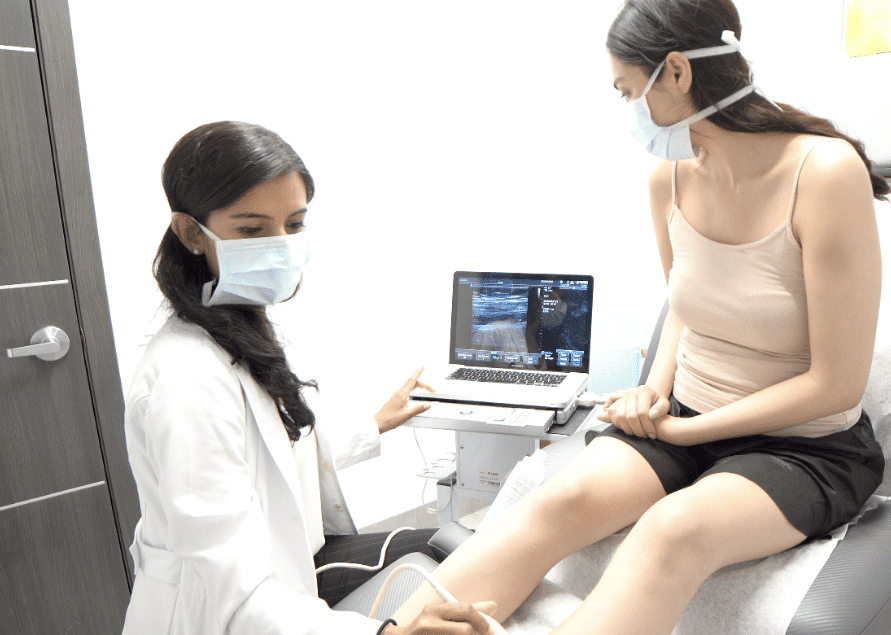
How can I find a doctor to remove varicose veins?
There are many ways to find a doctor to remove varicose veins. You can ask your primary care doctor for a referral, look online, or ask family or friends for recommendations. If you look for varicose vein doctors online, you must find those with 5-star ratings and patient reviews.
When looking for a doctor to treat your varicose veins, it is important to find someone who is experienced and who you feel comfortable with. You may want to ask the doctor how many varicose vein procedures they have performed. It is also important to make sure the doctor is board certified by the American Board of Venous and Lymphatic Medicine, an organization that certifies the country’s top 1% of vein doctors. They should have also completed their residencies and fellowships in fields related to vein care and phlebology.
In addition to being ABMS board-certified, your vein doctor must also have specialized training in minimally invasive treatments for varicose veins in the legs. Some of the best treatments for varicose veins in the legs include radiofrequency ablation, endovenous laser ablation, VenaSeal, ambulatory phlebectomy, and sclerotherapy. Your vein doctor must specialize in these procedures, and they must avoid varicose vein surgeries. They must also perform thorough ultrasound scans to diagnose the root cause of your varicose veins and spider veins.
What is the difference between varicose veins and spider veins?
Varicose and spider veins are enlarged veins usually caused by excessive blood accumulation in the leg veins. However, there are some key differences between the two.
- Varicose veins are larger, and they often cause pain or discomfort. They can also lead to more serious complications, like blood clots. Spider veins, on the other hand, are much smaller. They’re also not usually painful and don’t typically lead to major health problems.
- Varicose veins always bulge out of the skin’s surface in dense, rope-like masses. But spider veins remain under the skin’s surface, looking like dense clusters of spider webs.
- Varicose veins are often the result of weakened valves or walls in the veins. This can be due to various factors, including genetics, obesity, pregnancy, and prolonged standing. Spider veins can also be caused by weakened vein valves, but they can also be asymptomatic.
If you’re concerned about either condition, please talk to your vein doctor. They can help you determine if you have varicose veins or spider veins if they’re caused by underlying chronic venous insufficiency, and they can recommend the best treatment options for you.
Why do varicose veins form?
The veins in our legs must work against gravity to bring blood back to the heart. They have one-way valves that open to let blood through and then close to prevent it from flowing backward. When vein valves work properly, blood flows smoothly through the veins and back to the heart. But when the valves get damaged or weakened, they may not close properly, and blood can pool in the leg veins. This condition is known as chronic venous insufficiency and is directly responsible for the eventual formation of varicose veins and spider veins.
What is the best treatment for varicose veins in the legs?
There are many treatments for varicose veins in the legs, but not all are effective for everyone. Some treatments are more effective for certain types of varicose veins than others. Here are some of the most common treatments for varicose veins in legs:
- Compression stockings: Compression stockings are compression garments that apply gentle pressure to your legs to improve blood flow and reduce swelling.
- Sclerotherapy: Sclerotherapy is a procedure that involves injecting a solution into your varicose veins. The solution then causes the vein to collapse and fade away. Sclerotherapy is most effective for small to medium-sized varicose veins.
- Endovenous laser ablation: Endovenous laser ablation is a minimally-invasive procedure that uses laser energy to destroy the diseased varicose veins. This procedure can treat the root cause of varicose veins, ensuring long-lasting relief.

